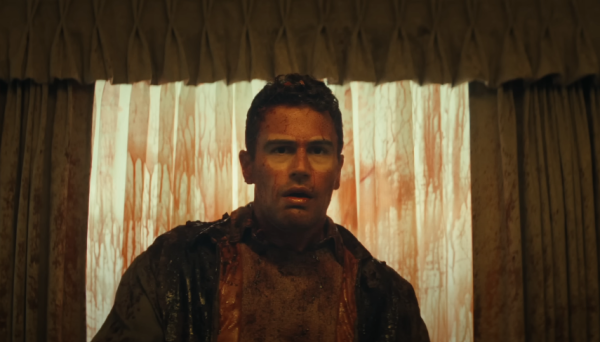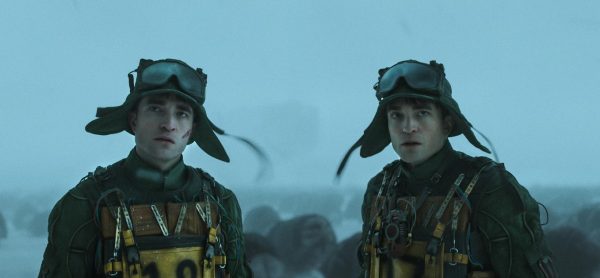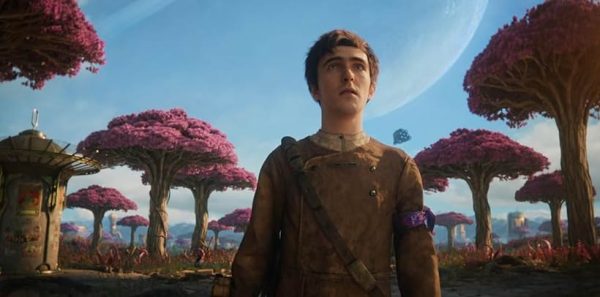Looking For Alaska: More Than A Manic Pixie Dream Girl
*Spoilers Ahead*
Alaska walks over on a bench beside Dr. Hyde. She asks if she can sit there and eat her sandwich. He allows her to, although she did interrupt his meditation. She confides in him about feeling alone because the other students have been isolating and shaming her. He listens and tells her that change is inevitable; there are more lives possible for her and this is just one difficult moment in time.
On October 18, 2019 the eight episode miniseries Looking For Alaska was released onto Hulu. This miniseries was based on the book of the same name written by John Green.
The series has many strengths. The acting is incredible, and the length of eight episodes allows time for character and plot development that the book was not able to give. Certainly, this story would have been told differently if it had a two-and-a-half-hour time limit. But as a show, the story was able to expand beyond the narrow point of view of the male protagonist, Miles “Pudge” Halter, portrayed by Charlie Plummer.
The main critique of the book is that Miles’s love interest, Alaska Young (Kristine Froseth), is seen as fulfilling the trope of a Manic Pixie Dream Girl. The Manic Pixie Dream Girl is a one-dimensional character who is used to fulfill the fantasies and imagination of the protagonist, while getting him outside of his comfort zone and changing his perception of life in some way. Typically, Manic Pixie Dream Girls are seen as bubbly or full of life, but there is another type that is moody, impulsive, and whose death is seen as a necessary sacrifice in order for the protagonist to recognize something about their own life. Alaska Young is frequently cited in thesis papers as the latter of these two types.
In the mini series, we see Alaska Young not as a trope, but rather as a young woman struggling with mental health and relationships. While Miles Halter views her as someone who is fantastical and perfect, the other characters are allowed flashbacks, as well as conversations with Alaska that provide more context towards her personality. Miles is not a part of these flashbacks, proving that he does not know her as well as the others do.
In the wake of Alaska’s death, Miles’s friend Takumi Hikohito (Jay Lee) scolds Miles by telling him “not to pander your fantasy that Alaska was madly in love with you.” This statement calls out Miles for having a limited idea of who Alaska is. A lot of her so-called romance with Miles is because she can tell he cares about her, and wants temporary comfort and validation while struggling with her long-distance relationship with Jake (Henry Zaga). It isn’t love, although Miles sees it as such.
Ron Cephas Jones should get an Emmy for “Outstanding Supporting Actor in a Limited Series or Movie” for his portrayal of the high school religion teacher, Dr. Hyde. Jones is reverent and calm. His slow, patient, and peaceful manner is similar to that of a tortoise. He becomes a central figure in the show that the students look up to and feel safe to confide in. There are several emotional scenes in the series of him having conversations with the students. He becomes a safe haven for Alaska in a time when she is being shamed and isolated from the other students. He delivers lines in such a way that the viewer is drawn in to feel the emotions that he has. The TV series takes the liberty of adding a backstory for Dr. Hyde of losing his partner to AIDs. It is an effective and interesting choice in an example of loss and longing that persists after death, which parallels the feelings Miles faces after Alaska dies.
While the mini series covers the idea of a private school in Alabama as a kind of makeshift summer camp with rich and poor kids pulling pranks on each other out of revenge, the show is serious rather than campy. Each of the character’s backstories are revealed throughout the show. Alaska is given a life beyond being the object of a Miles’s fantasy. The characters demonstrate the strength of friendship through the challenges of high school life and in the face of grief. I laughed, I cried, and I laughed through tears while watching Looking for Alaska.
Grade A






